Bestimmen der zum Laden einer Batterie erforderlichen Solar- und Wechselrichtergröße
Bei der Planung eines netzunabhängigen oder Notstromsystems stellt sich oft die Frage: Wie bestimme ich die richtige Größe der Solar- und Wechselrichteranlage, um eine Batterie effizient zu laden? Die richtige Größe ist entscheidend für zuverlässige Leistung, Kosteneinsparungen und Langlebigkeit. Ist Ihre Solaranlage zu klein, werden Ihre Batterien nicht vollständig geladen. Ist Ihr Wechselrichter zu schwach, kann er Ihre Last möglicherweise nicht bewältigen. Dieser Leitfaden führt Sie durch alles, was Sie wissen müssen, um die optimale Größe Ihrer Solar- und Wechselrichteranlage zu berechnen und Batterien effektiv und sicher zu laden.
- Warum die richtige Größe für Ihr Batterieladegerät wichtig ist
- Das Größenverhältnis zwischen Solarmodulen und Batteriebänken verstehen
- Berechnung der zum Laden einer Batterie erforderlichen Solarpanelgröße
- Bestimmung der richtigen Wechselrichtergröße zum Laden von Batterien und zur Lasthandhabung
- Passende Wechselrichter- und Solargröße für optimale Ladeeffizienz
- Tools und Formeln zur Größenbestimmung Ihrer Solar- und Wechselrichteranlage
- Faktoren, die die tatsächlich benötigte Größe in realen Anwendungen beeinflussen
- Auswählen von Komponenten basierend auf Ihrer Systemgrößenstrategie
- Zu vermeidende Fehler bei der Berechnung der Solar- und Wechselrichtergröße
- Off-Grid-Systeme vs. netzgekoppelte Systeme und die Auswirkungen auf die Größenberechnung
- Erweiterte Optionen zum Skalieren der Systemgröße
- Abschließende Überlegungen zur Wahl der richtigen Größe zum Laden von Batterien
Warum die richtige Größe für Ihr Batterieladegerät wichtig ist
Effizienz und Leistung
Die Wahl der richtigen Größe Ihrer Solarmodule und Ihres Wechselrichters beeinflusst die Geschwindigkeit und Vollständigkeit des Ladevorgangs. Unterdimensionierte Systeme führen zu längeren Ladezeiten und vorzeitiger Batterieverschlechterung.
Überlastung oder Unterversorgung vermeiden
Wenn Ihr Wechselrichter nicht die richtige Größe hat, kann er beim Laden der Batterien ausfallen oder nicht genügend Strom an Ihre Geräte liefern. Überdimensionierte Systeme können unnötig teuer und ineffizient sein.
Das Größenverhältnis zwischen Solarmodulen und Batteriebänken verstehen
Batteriekapazität und -spannung
Um die Größe Ihrer Solaranlage zu berechnen, müssen Sie zunächst die Kapazität Ihres Batteriespeichers kennen, die üblicherweise in Amperestunden (Ah) und Spannung (V) angegeben wird. Zum Beispiel:
12 V × 100 Ah = 1200 Wh (oder 1,2 kWh)
Diese Zahl gibt an, wie viel Energie nachgefüllt werden muss.
Täglicher Verbrauch und Ladezeit
Wenn Sie Ihre Batterie an einem Tag vollständig aufladen möchten, muss Ihre Solaranlage mindestens die gleiche Wattzahl erzeugen wie der verbrauchte Strom – zuzüglich Verluste (normalerweise ca. 20 %). Dies hat direkten Einfluss auf die Größe Ihrer Solaranlage.
>>Siehe auch So wählen Sie den richtigen Drahtdurchmesser für Ihr Projekt
Berechnung der zum Laden einer Batterie erforderlichen Solarpanelgröße
Schritt 1 – Kennen Sie die Spezifikationen Ihrer Batterie
Batteriespannung (V): 12 V, 24 V, 48 V
Batteriekapazität (Ah): Beispiel 200 Ah
Gesamtenergie (Wh): V × Ah = insgesamt zu ladende Wattstunden
Schritt 2 – Berücksichtigen Sie die Ladeeffizienz
Die Ladeverluste liegen zwischen 10 % und 25 %. Bei einer 12-V-200-Ah-Batterie:
12 V × 200 Ah = 2400 Wh
20 % Verlust einbeziehen: 2400 Wh ÷ 0,8 = 3000 Wh (erforderliche Energiezufuhr)
Dies hilft dabei, die erforderliche Größe Ihrer Solaranlage zu bestimmen.
Schritt 3 – Sonnenstunden berücksichtigen
Die durchschnittliche maximale Sonneneinstrahlung variiert je nach Region. Bei 5 Sonnenstunden pro Tag:
Erforderliche Solarpanelgröße = 3000 Wh ÷ 5 h = 600 W
Zusammenfassung: Verwenden Sie eine 700-W-Solaranlage für mehr Zuverlässigkeit
Weitere Überlegungen
Eine Überdimensionierung von 10–20 % bietet Puffer für bewölkte Tage
Verwenden Sie MPPT-Controller für eine bessere Effizienz bei größeren Panels
Schatten, Neigungswinkel und Verdrahtungsverluste beeinflussen auch die tatsächliche Leistung
Bestimmung der richtigen Wechselrichtergröße zum Laden von Batterien und zur Lasthandhabung
Wechselrichter vs. Ladegerät: Was ist der Unterschied?
In Hybridsystemen kann der Wechselrichter auch als Ladegerät fungieren. Alternativ übernimmt ein externer Solarladeregler die Ladung vom Modul zur Batterie. Die Größe Ihres Wechselrichters muss jedoch zur Batteriespannung und zur gewünschten AC-Leistung passen.
Schritt 1 – Dauer- und Spitzenlasten verstehen
Berechnen Sie die gesamte Dauerlast in Watt und die Spitzenlast (Stoßlast):
Beispiel:
Kühlschrank = 200 W
Lichter = 100W
Pumpe = 500 W (mit 1000 W Stoßleistung)
Gesamt = 800 W Dauerleistung, 1800 W Spitzenleistung
Wählen Sie eine Wechselrichtergröße, die für beide geeignet ist.
Schritt 2 – Wechselrichter an Batteriebank anpassen
Wechselrichter sind in den Ausführungen 12 V, 24 V und 48 V erhältlich. Die Größe Ihres Wechselrichters muss der Spannung Ihres Batteriespeichers entsprechen. Nicht übereinstimmende Spannungen können zu Ausfällen oder ineffizientem Laden führen.
Schritt 3 – Ladestromgrenzen berücksichtigen
Einige Wechselrichter verfügen über eingebaute Ladegeräte mit einer maximalen Strombegrenzung. Wenn Ihre Solaranlage 50 A liefern kann, Ihr Wechselrichter-Ladegerät aber nur 30 A akzeptiert, schränkt dies die Ladeeffizienz ein – ein Argument für die Wahl der passenden Komponentengröße .
Passende Wechselrichter- und Solargröße für optimale Ladeeffizienz
Szenariobeispiel: 12 V 200 Ah Batteriebank
Gesamtenergiebedarf: 2400 Wh
Ladeziel: Ein Tag
Panelgröße : 700 W Solaranlage
Wechselrichtergröße : 1000 W (mit 2000 W Überspannung), 12 V kompatibel
Hinzufügen von Last und Batterieerweiterung
Wenn Sie in Zukunft weitere Batterien oder höhere Wechselstromlasten hinzufügen möchten, wählen Sie einen modularen Wechselrichter und dimensionieren Sie Ihr Solarsystem etwas größer, um dem Wachstum Rechnung zu tragen.
Tools und Formeln zur Größenbestimmung Ihrer Solar- und Wechselrichteranlage
Grundformeln
Batterie Wh = V × Ah
Panelgröße (W) = Batterie-Wh ÷ Sonnenstunden ÷ Effizienzfaktor
Wechselrichtergröße (W) = Gesamtdauerlast + Stoßlastpuffer
Online-Rechner
Mehrere Websites bieten Solar-Dimensionierungsrechner an. Geben Sie einfach Batteriekapazität, Sonnenstunden und Lastbedarf ein. Überspringen Sie jedoch nicht die manuelle Überprüfung – so stellen Sie sicher, dass die Größe Ihrer spezifischen Umgebung entspricht.
Faktoren, die die tatsächlich benötigte Größe in realen Anwendungen beeinflussen
Geografische Lage
Mehr Sonnenstunden = kleinere Solaranlagengröße . Weniger Sonne = größere Paneele oder Backup-Quellen.
Klima und saisonale Schwankungen
In den Wintermonaten ist die Sonneneinstrahlung geringer. In kälteren Regionen kann eine 50 % größere Anlage erforderlich sein, um eine vollständige tägliche Ladung zu gewährleisten.
Batterietyp und Chemie
Blei-Säure: Geringere Ladeeffizienz (70–85 %), erfordert größere Panelgröße
Lithium: Höhere Effizienz (90–98 %), ermöglicht kompaktere Abmessungen
Auswählen von Komponenten basierend auf Ihrer Systemgrößenstrategie
Solarladereglertyp
MPPT (Maximum Power Point Tracking): Ideal für größere Systeme und variable Panelkonfigurationen
PWM (Pulsweitenmodulation): Geringere Kosten, besser geeignet für kleine Systeme mit fester Spannung
Kompatibilität mit Batteriemanagementsystemen (BMS)
Stellen Sie sicher, dass Ihr Wechselrichter und Solarregler reibungslos mit dem BMS Ihrer Batterie zusammenarbeiten. Fehlanpassungen können die Ladeakzeptanz unabhängig von der Größe einschränken.
Zu vermeidende Fehler bei der Berechnung der Solar- und Wechselrichtergröße
Ignorieren von Lastprofilen
Viele Leute berechnen die Batteriegröße , vergessen dabei aber Geräte oder Werkzeuge, die während des Ladevorgangs Strom verbrauchen. Achten Sie darauf, die Größe sowohl für den Ladevorgang als auch für den Live-Betrieb zu wählen.
Keine Berücksichtigung des zukünftigen Lastwachstums
Denken Sie beim Kauf an die Zukunft. Wenn Ihr täglicher Verbrauch jetzt 2 kWh beträgt, später aber auf 4 kWh steigen könnte, planen Sie von Anfang an sowohl bei der Solar- als auch bei der Wechselrichtergröße Spielraum ein.
Unterdimensionierte Solaranlagen
Ein häufiger Fehler besteht darin, die Größe der Solaranlage zu unterschätzen, insbesondere an bewölkten oder winterlichen Standorten.
>>Siehe auch: Sollten Batteriezellen dicht gepackt oder mit Platz versehen werden?
Off-Grid-Systeme vs. netzgekoppelte Systeme und die Auswirkungen auf die Größenberechnung
Netzgekoppelte Systeme
Diese Systeme nutzen das Netz als Backup, sodass Ihre Solar- und Wechselrichtergröße nicht 100 % des täglichen Bedarfs abdecken muss, aber dennoch Spitzenproduktionen effizient bewältigen sollte.
Inselnetzsysteme
Der gesamte Strom muss aus dem System kommen. Dies erfordert eine genaue Lastprognose und Pufferkapazität sowohl beim Wechselrichter als auch bei der Solarmodulgröße, um Ausfälle zu vermeiden.
Erweiterte Optionen zum Skalieren der Systemgröße
Stapelbare Wechselrichter
Viele Hybrid- und Inselwechselrichter ermöglichen die Parallelschaltung mehrerer Einheiten. Dank dieser Flexibilität können Sie die Wechselrichtergröße mit Ihrem wachsenden System erweitern.
Hinzufügen von Solarmodulen zur Erweiterung der Systemgröße
Die meisten modernen Laderegler können zusätzliche Größe bewältigen, wenn zusätzliche Panels hinzugefügt werden. Sorgen Sie für eine gleichmäßige Verteilung der Panelspannungen und -konfiguration.
Abschließende Überlegungen zur Wahl der richtigen Größe zum Laden von Batterien
Ob Sie eine Hütte im Wald, ein Wohnmobil unterwegs oder ein Notstromsystem mit Strom versorgen, die Berechnung der richtigen Größe Ihrer Solar- und Wechselrichteranlage ist unerlässlich. Sie bestimmt Effizienz, Sicherheit und langfristige Zuverlässigkeit. Wenn Sie heute in Komponenten mit der richtigen Größe investieren, sparen Sie später Upgrades und Wartungsarbeiten.
Zusammenfassend lässt sich sagen, dass das Verständnis und die genaue Berechnung der Größe Ihrer Solar- und Wechselrichteranlage einen reibungslosen, sicheren und effizienten Batterieladevorgang gewährleistet. Bewerten Sie Ihren Energiebedarf ehrlich, berücksichtigen Sie alle Systemverluste und lassen Sie Spielraum für zukünftige Erweiterungen. Mit der richtigen Größe versorgt Sie Ihre Solaranlage über Jahre hinweg mit sauberer und zuverlässiger Energie.

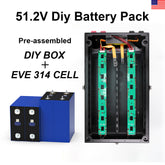

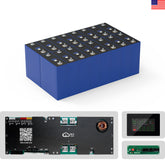

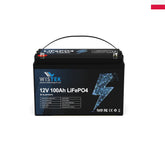
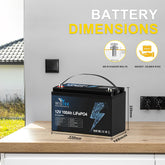

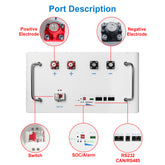
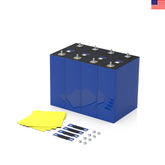
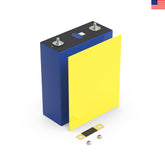
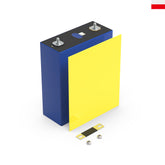

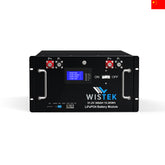
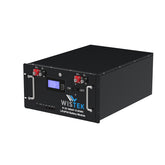
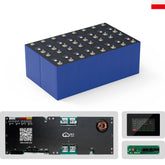








Leave a comment
Please note, comments need to be approved before they are published.